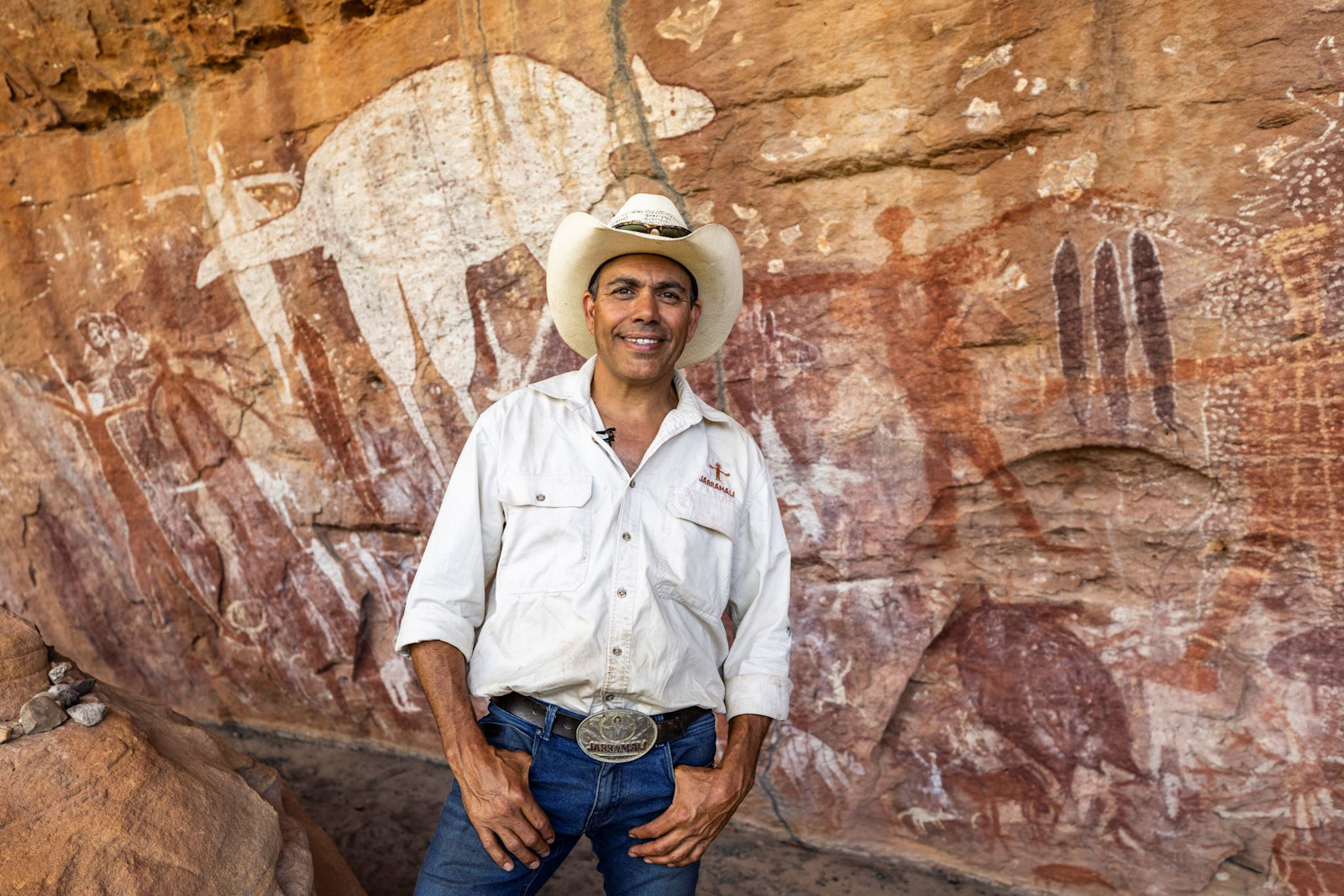Guide to the whale in Aboriginal cultures
Observing humpback and other whale species migrating along Australia’s coasts during the cooler months is a magical experience. These giants of the deep also loom large in Aboriginal spirituality.
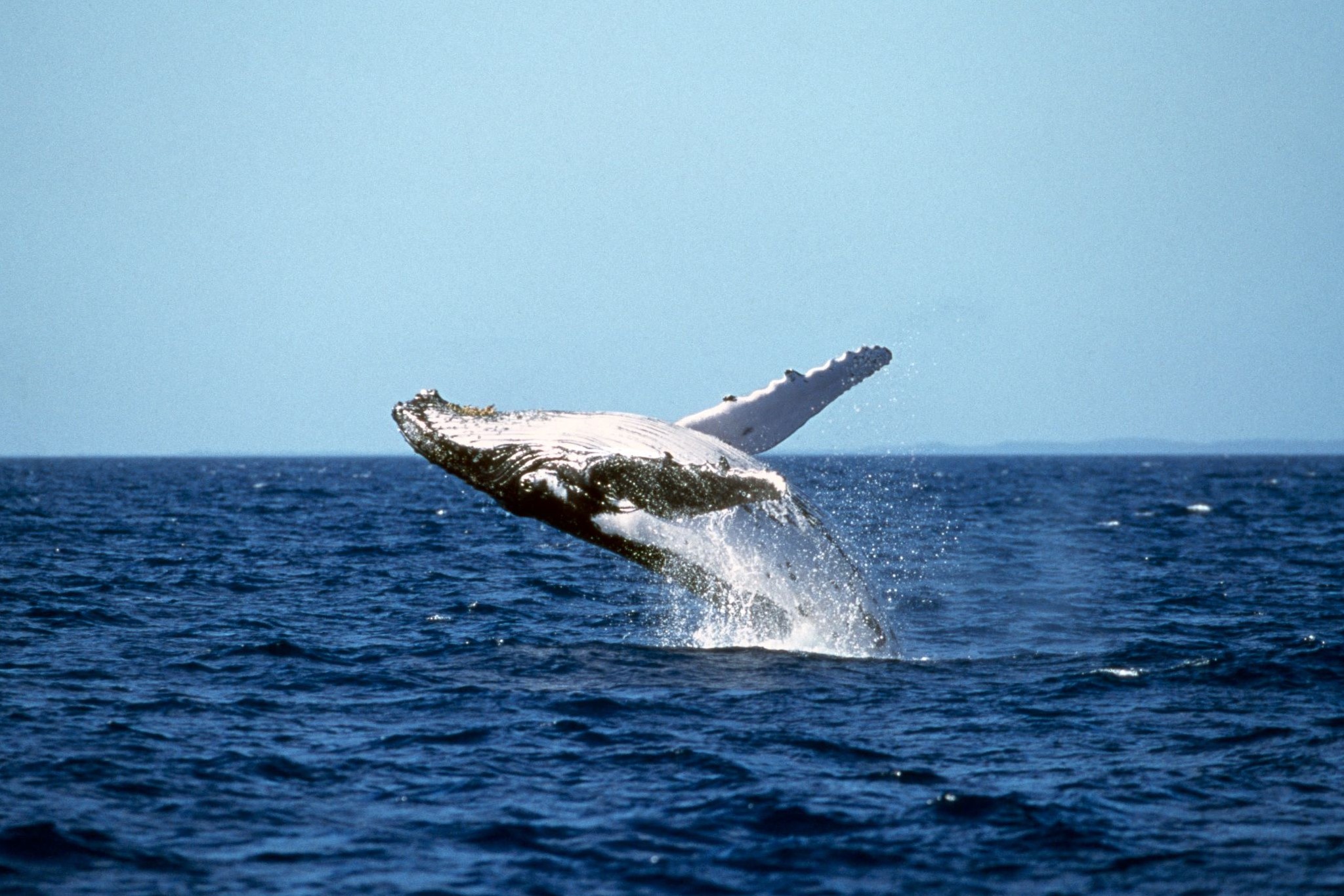
Whale breaching out of water
Observing humpback and other whale species migrating along Australia’s coasts during the cooler months is a magical experience. These giants of the deep also loom large in Aboriginal spirituality.
Why is the whale spiritually significant?
Many Saltwater Aboriginal groups have cultural connections to whales. In Western Australia, the whale is a central figure in the Dreaming of the Noongar Nation, who know all whale species as mamang.
“Our people had communication with whales for thousands of years, says Whadjuk Noongar man Steven Jacobs, director and guide at In Culture Tours, who shares mamang Dreaming stories on his Walyalup / Fremantle cultural tour.
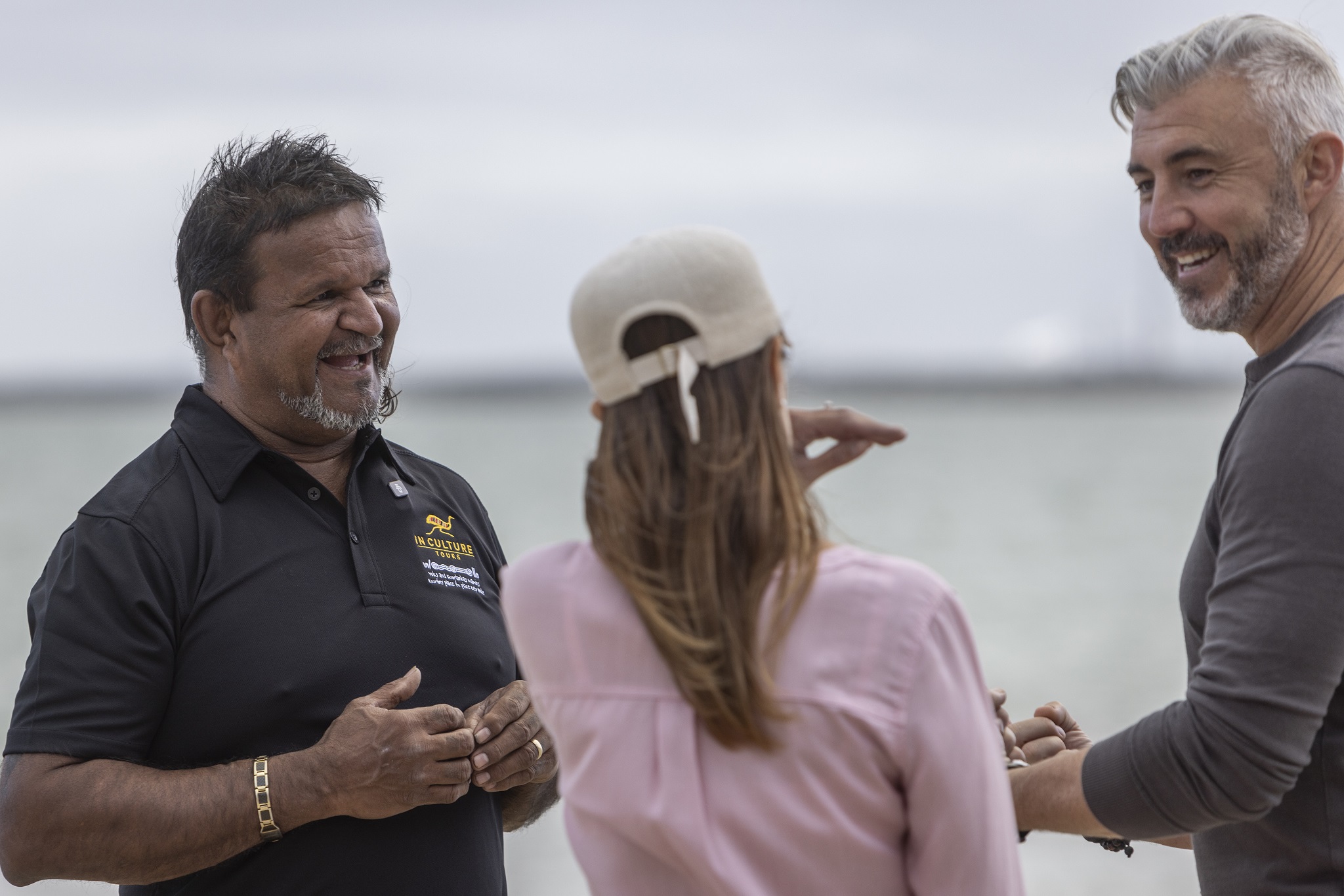
In Culture Tours, Boya Kaarla / Cape Peron, Western Australia © Tourism Australia
“In our Dreamtime, we believe that when a whale comes into the bay here and gives birth to a calf, one of our ancient spirits from our coastal graveyards will attach itself to that whale,” says Steven. “The whale will take that ancestor spirit around the world for 80 to 90 years before coming home to the West Australian coast to die.”
Dying whales would beach themselves, Steven adds, and an Aboriginal warrior would cut it open with a ceremonial knife. “When all the blood rushes to the shore, in our Dreamtime that’s the spirit returning home to his Country.”
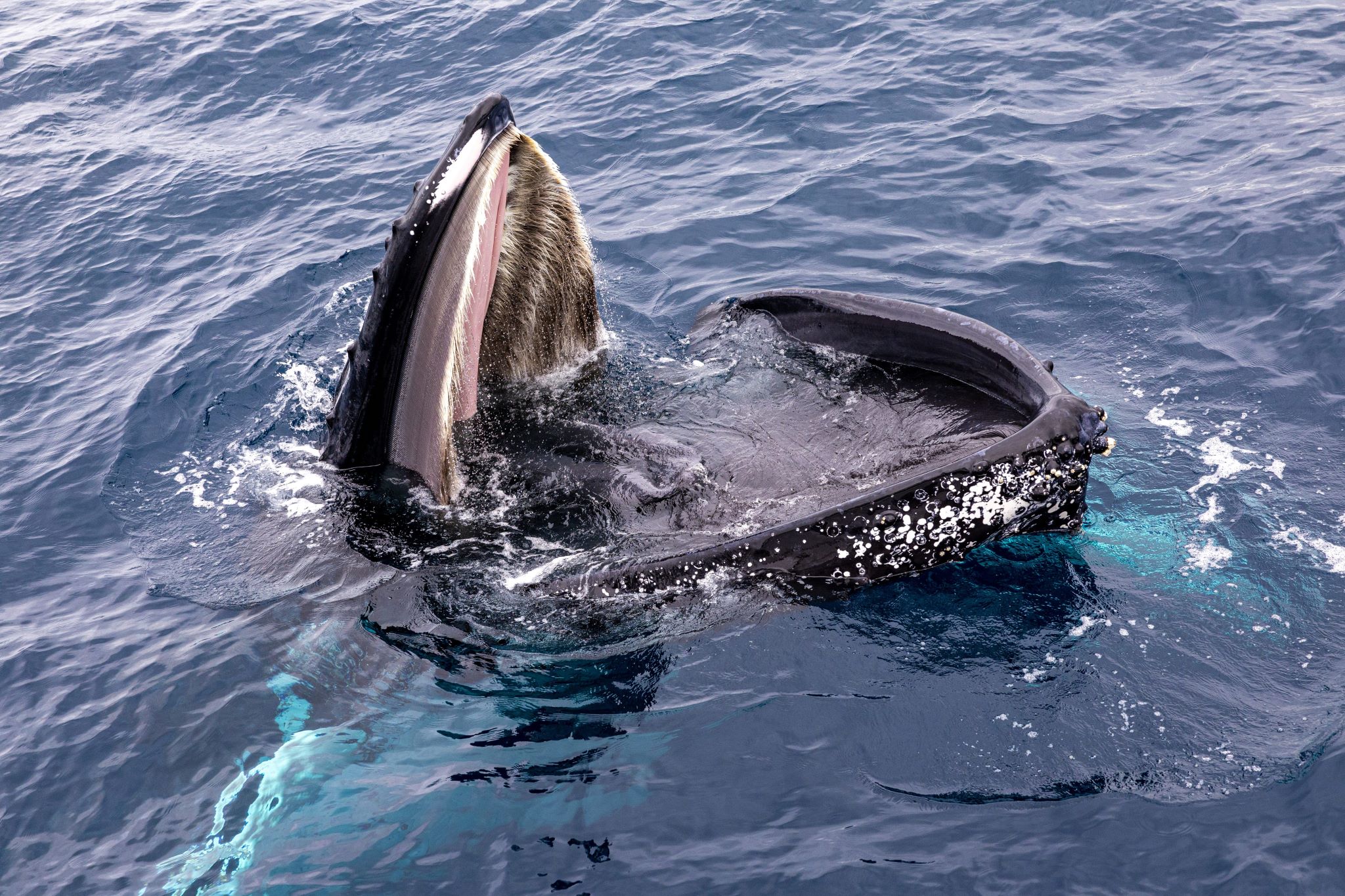
Whale with its mouth open above the water in the ocean at Redcliffe Moreton Bay, Queensland © Tourism Australia
Whales also feature in the Creation stories of Aboriginal groups on Australia’s east coast. For the Gadigal people of the Eora Nation in Sydney / Warrane, the word Gadigal literally means ‘whale people’. It’s just one of many culturally significant animals, plants and places you’ll learn about on a tour with Dreamtime Southern X.
As a guest on the Yuin Retreat hosted by Ngaran Ngaran Culture Awareness on the New South Wales South Coast, you might learn the story of a binding promise between whales (Gurawal) and people. And on a paddling tour along the idyllic waterways of the New South Wales Coffs Coast with Wajaana Yaam Gumbaynggirr Adventure Tours, your guide may tell you that gaggal or ‘the ocean’ that surrounds you is a Totem for all Gumbaynggirr. For some local families, their Totems also include the gurruuja, the Gumbaynggirr word for whale.
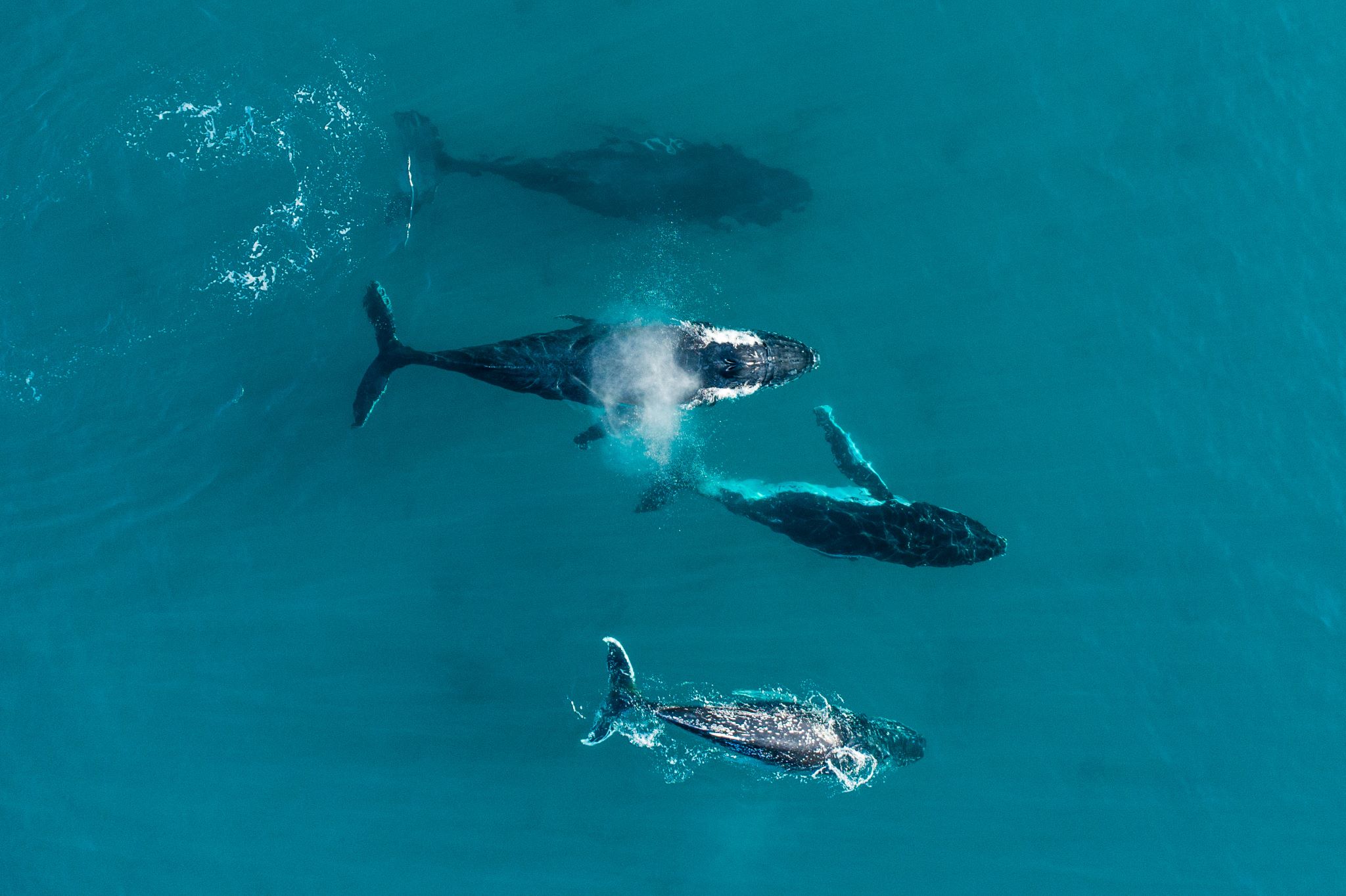
Whales migrating along Australia's coasts
Where can I see whales in Australia?
Humpback and other whale species can be seen migrating along Australia’s east coast between April and November, and along the west coast between May and December. Southeast Queensland is one of many great places to look out for whales during the season – learn more about this natural spectacle on a whale-watching cultural walk with Yura Tours on Minjerribah / North Stradbroke Island as you watch yallingbilla (whales in the Jandai language of the Quandamooka people) breach right offshore. Whales can also be spotted from the walking trails on Jellurgal, a culturally significant headland to the Yugambeh people of the Gold Coast home to the Jellurgal Aboriginal Cultural Centre.
You might even be lucky enough to observe humpback whales up close on a cultural snorkelling tour on Queensland’s Great Barrier Reef with Dreamtime Dive & Snorkel – a spiritual experience for anyone.

